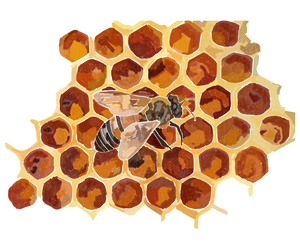What exactly is raw honey?
RAW HONEY

Raw honey is extracted immediately from the honeycomb cells inside a beehive.
This honey contains pollen and propolis, both very beneficial for health. It may also contain dead bees, legs, wings, wax fragments, and other impurities that are filtered out before packaging.
Raw honey cannot be heated above 35 degrees Celsius, which is the normal temperature of a beehive. While it's fine to strain raw honey, it's never filtered or pasteurized. It also cannot contain any other additives.
Commercial honey is often highly processed and even chemically refined. Excessive heat can destroy honey's natural enzymes, vitamins, and minerals.
Filtering and processing removes many of the beneficial phytonutrients, including pollen and propolis.
The only way to achieve clear, glossy honey is through heat, so avoid golden, syrupy honey in favor of opaque, organic raw honey.
Commercial honey can be obtained from bees treated with antibiotics or given winter food in the form of sugar or a low-cost, high-fructose corn syrup.
Most honey sold in supermarkets does not contain traces of bee pollen.
The FDA maintains that any honey product that has been ultrafiltered like this is NOT actually honey, and therefore its health benefits cannot be assumed.


